



The Ghost Sonata is a play written by August Strindberg in 1907 as a part of five chamber plays cycle for the Intimate Theatre he created. The play often is considered as a self-sufficient piece of art firstly, because critics say, this one play from five is most representative to show Strindberg’s new ideas and his modern vision of dramatic art which later had a great influence on modern theatre development (and also on Sweden literature tradition). Secondly, because Strindberg himself paid more attention to plays be written and read self-sufficiently then to the way they might be performed. Strindberg used to say he himself was introduced to Goethe’s Faust, Schiller’s Don Carlos and Shakespeare’s The Tempest by reading them not by watching plays (Törnqvist and Steene). Strindberg’s own plays were occasionally published first before they were performed and in the Intimate Theatre, there was a rule to sell a textual variant of a performed play (Conway).
Apparently, Strindberg also understood the importance of a new vision being spread in Europe, especially in Paris – a becoming capital of modern ideas, where in the end of 19th – the beginning of the 20th-century realistic theatre tendencies still dominated, and plays easier could get there as a translated text. For the naturalism that could be found in Zola’s novels, the main idea was to show life how it is, with all the details, even if they were accidental. That came from photography development when photo-shoot shaped reality, uncensored became a popular art tendency. Strindberg disguised such a tendency, though he during his writer’s career not only felt an influence of “various -isms”, but “also partly adjusted to them while pursuing his own course” (Törnqvist and Steene).
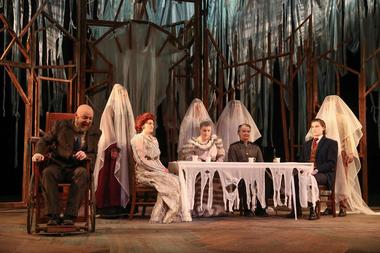
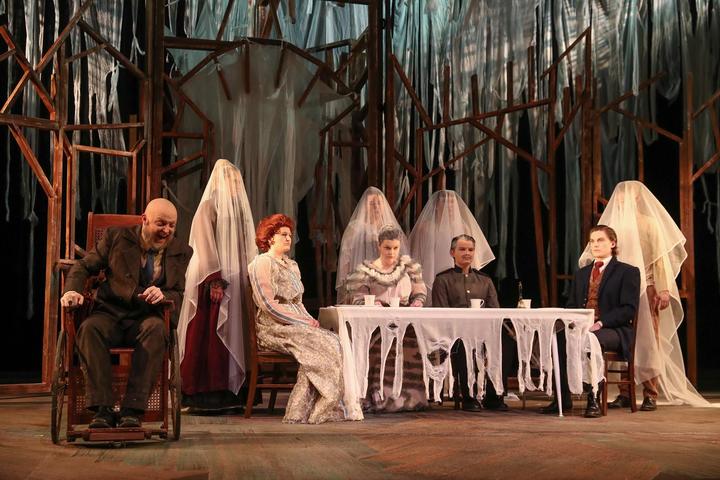
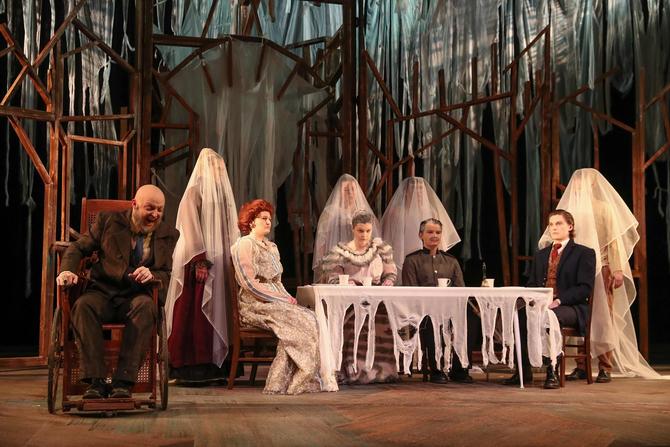
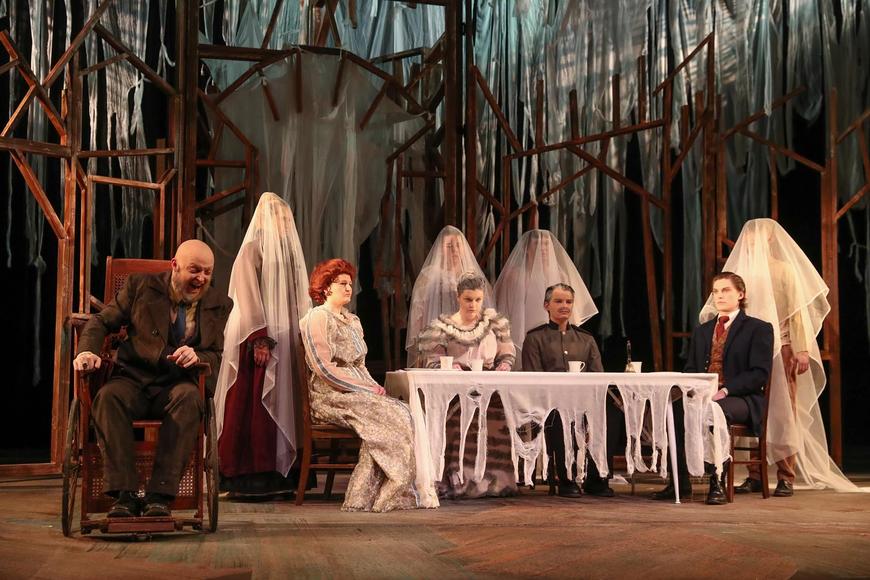
But in 1907 in The Ghost Sonata, there’s no place for accidental details, everything is a symbol, a metaphor created by author’s will. He chooses a vector of symbolical drama and simplifies the reality to the number of things he needs to convey ideas. Characters though don’t seem stable like in realistic theatre tradition. It feels like Strindberg is narrowing a horizontal space of a play to go vertically: deeper inside the character and up high to the God.
While the world was becoming more interested in reasonable reality Strindberg had come through a period of personal spiritual research. In literature he admired Goethe and Wagner mystic tradition more, then realistic modern authors. In The Ghost Sonata, the Old Man wants the Student to go and listen to Wagner’s “Die Walküre”. And the Old Man himself seems a lot like Goethe’s Mephistopheles and Faust all at once. This process of flowing all characters inside one character and outside to another feels romantic and mysterious, and express the versatility Strindberg wanted to convey.
Strindberg experienced the influence of Emanuel Swedenborg’s philosophy and even found consolation in it (Conway). From here came the idea that in afterlife world people and their habits stay the same – an important topic in The Ghost Sonata where characters also seem to be able to communicate with dead people, because the line between two worlds is delicate. Reader or audience can’t know for sure if there’s a dead character imagined by another or alive one. Is space closed within one real and one spiritual world? Are there inhabitants of one house, closed inside this house, or inside one man’s imagination?
Audrey Ahern, who played the Young Lady in The Ghost Sonata, says actors worked a lot to catch the “poetic sense of the language” because play is so unclear. “Strindberg takes the things we feel and can’t express and puts those feelings into a highly poetic, theatrical language” (Ahern). Paul Walsh, the author of a new translation of The Ghost Sonata, says Strindberg lives many places for actors, directors, critics, and scientists to discuss the play and to see a variety of senses (Walsh). Indeed, often replicas of characters are simply unfinished and one starts where another ends. This causes an effect of the unspoken message as if words are signs, pieces of thoughts that altogether convey some kind of sensation – a method, which later the Theater of Absurdity will use.
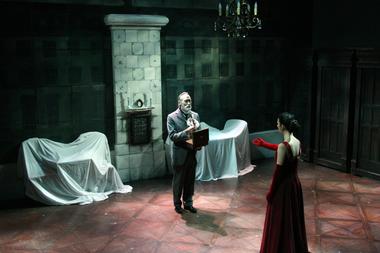
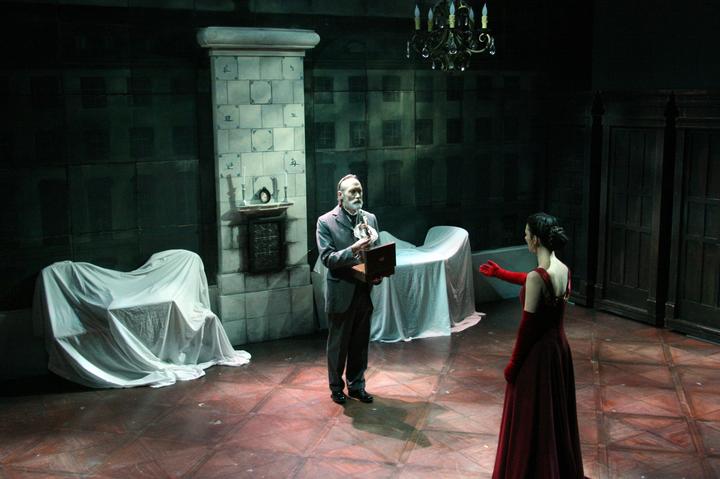
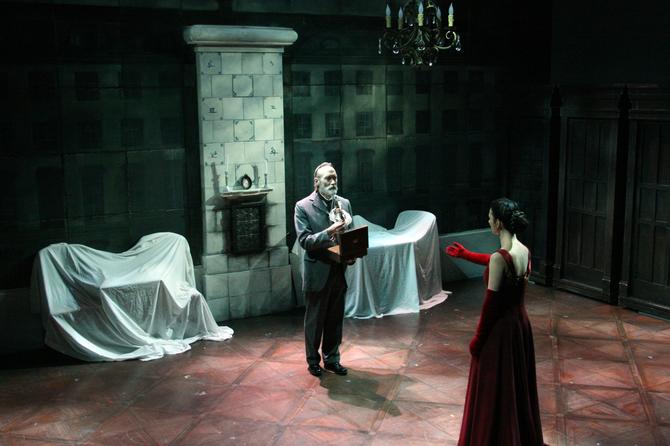
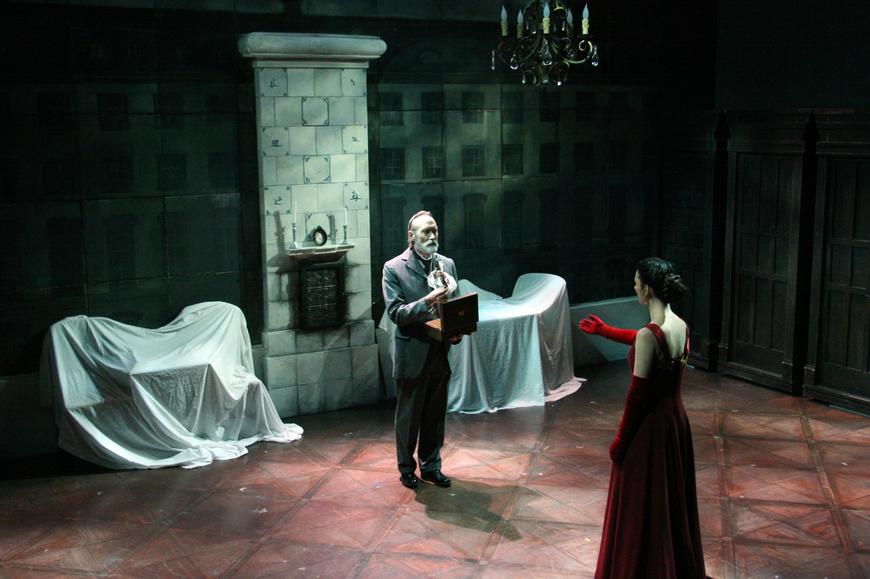
Attached file: The Ghost Sonata for the Intimate Theatre.doc
Click download to get access to a full version of the paper
There’re also other ideas later modern literature (especially theatre) will learn from Strindberg. Firstly, it’s the alienation of the main hero. The student comes to the ghost house literally, and at the same time, there’s social alienation. People are hiding secrets, relationships are built without real fillings and behind the wealthy house, there’s a lie. Strindberg’s also quite ironic about “the eternal values” as love, friendship, and a happy family. The Old Man comes to the house to expose secrets of its inhabitants and to show to the Student how filthy people are. And the Mummy later exposes the Old Man’s lie also. The only half-lost soul in this house is the Young Lady Student is attracted to, but her image is quite decadent, so Student faces the poisoned world. People are linked to each other and make each other suffer.
Secondly, it’s a closed space somewhere between dream and reality, where dream justifies everything. The location is limited, but characters are opened to reflections inside the location. They've not formed characters from the traditional theatre, likely they are thoughts and sensations. “Strindberg abandons all traditional conception of character in favor of the term soul” (Conway).
Thirdly, the play looks more like paroemia, philosophical tale and characters are types, but unfinished, flowing into each other and supplying each other inside one chamber sensation.
The Intimate Theatre was created by Strindberg not only as a reaction on traditional theatre in order to counterpoise something to the realistic tendency, but also to supply new ideas. There are only 161 seats in the building, rather small stage – six meters long and four meters deep to make an intimacy, where researching in art’s field is acceptable.
As Strindberg paid great attention to the text, he wanted actors to make “slow, clearly delivered, motivated speeches” to an audience, so it can “always listen to a good speaker” (Conway). During the process of acting actors should supply each other as characters in the play do in order to make them united as one organism. The most valuable for the Intimate Theatre is to cause a unique communicative act with the audience.
Strindberg’s chamber plays are written in the way to cause the intimate effect, but also to create a play similar in its construction to chamber music. The Ghost Sonata is an allusion on sonata form, especially on Beethoven’s music, “a thematic drama structure based on musical principals of composition” (Törnqvist and Steene). The cycle of five chamber plays can be considered like one epic creation, where parts are linked to each other thematically with leitmotivs as parts of a symphony or an opera. And inside The Ghost Sonata, there’re leitmotivs too: love, death, alienation, madness, success, and disaster changing one another to return with the new generation.
August Strindberg manages to catch a sensation and to see eternity in it.